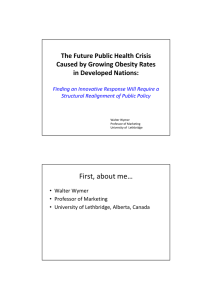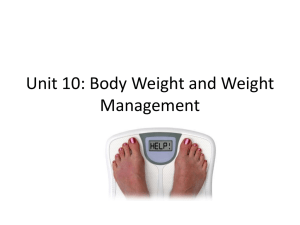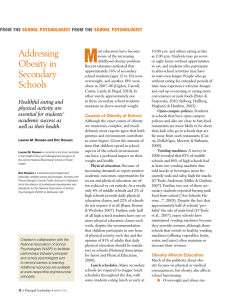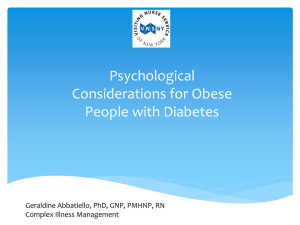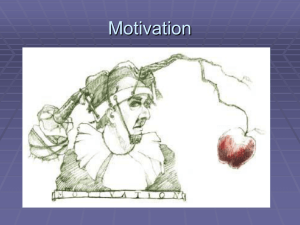chapter 10 emotions & motivations - Home
advertisement
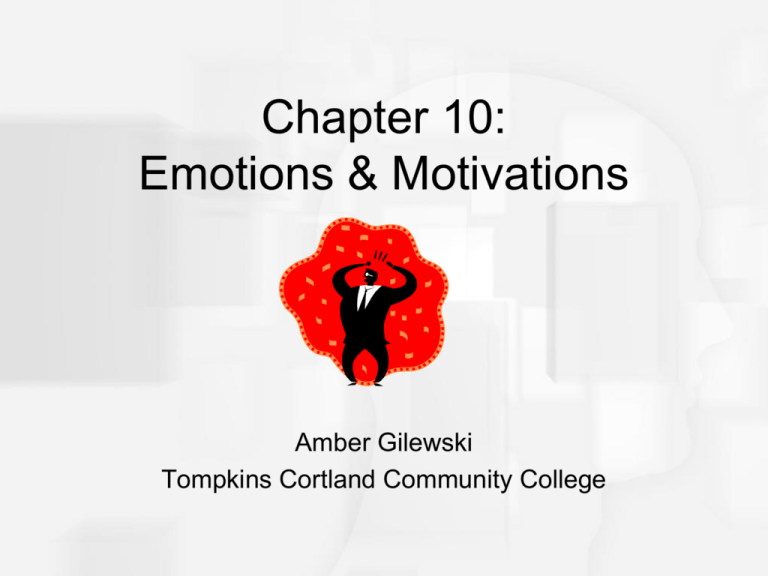
Chapter 10: Emotions & Motivations Amber Gilewski Tompkins Cortland Community College Motivational Theories and Concepts • Motives – needs, wants, desires leading to goal-directed behavior • Instincts – inborn patterns of behavior • Drive theories – seeking homeostasis • Incentive theories – regulation by external stimuli • Evolutionary theories – maximizing reproductive success Stress: An Everyday Event • Major stressors vs. routine hassles – Cumulative nature of stress – Cognitive appraisals • Everyday & major stressors affecting the body/immune system 1.Work-related problems 2.Noise 3.Bereavement & Loss 4.Poverty, powerlessness, and low status The Motivation of Hunger and Eating: Biological Factors • Brain regulation – Lateral hypothalamus (LH) and ventromedial nucleus (VMH) of the hypothalamus – Paraventricular nucleus • Glucose and digestive regulation – Glucostatic theory • Hormonal regulation – Insulin and leptin Eating and Weight: The Roots of Obesity • Obesity – 20% above average weight for height • Evolutionary – food supply changes • Genetic predisposition – Body Mass Index and adoption study • The concept of set point (natural point in weight stability) & settling point (weight stays the same unless long lasting changes take place) • Dietary restraint – may contribute to overeating and obesity Other factors in eating & obesity • The environment & obesity: lifestyle factors • Cultural attitudes: ideal about body size vary across culture and time/history • Is there a “fat” gene? 1/3 of people in U.S. are obese larger fat cells in obese people & set point of weight determined by metabolism 200 genes that contribute to weight many factors contribute to weight loss & gain The Mystery of Sexual Orientation • Normal vs. abnormal behavior? - Deviation from average? - Standard or ideal? *homosexuality labeled mental illness until 1973 - Consequences of behavior? *distress, guilt, or harmful to someone else The Mystery of Sexual Orientation • Heterosexual – Bisexual – Homosexual – A continuum as suggested by Alfred Kinsey – Homosexuality estimates between 2%-10% • Theories explaining homosexuality – Environmental – Reinforcement and observational learning – Biological – twin & adoption studies; brains & hormones (testosterone) – Interactionist – combination of 2 approaches Figure 10.14 Genetics and sexual orientation




